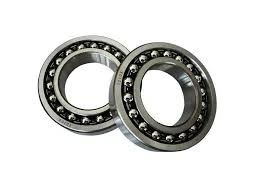
Nov . 09, 2024 05:50 Back to list
Dimensions and Specifications of Deep Groove Ball Bearings Explained
Understanding Deep Groove Ball Bearing Dimensions
Deep groove ball bearings are among the most commonly used types of bearings in various applications, due to their versatility, durability, and ability to accommodate both radial and axial loads. When selecting a deep groove ball bearing for a specific application, the dimensions of the bearing play a critical role in its performance and compatibility with the machinery. In this article, we will explore the key dimensions of deep groove ball bearings and their significance.
Key Dimensions of Deep Groove Ball Bearings
1. Bore Diameter (d) This is the inner diameter of the bearing, which allows it to be mounted onto a shaft. The bore diameter is crucial as it determines the fit between the shaft and the bearing. A correct fit minimizes friction, wear, and excessive heat generation. Bore sizes can vary greatly, from a few millimeters to several centimeters, depending on the application.
2. Outside Diameter (D) The outside diameter is the outer limit of the bearing. It defines how much space the bearing occupies in the housing. The outside diameter works in conjunction with the bore diameter to determine the overall size of the bearing. It is essential to ensure the outer diameter fits snugly within the bearings housing to avoid any movement that could lead to premature failure.
3. Width (B) The width of the bearing is the measurement between the inner and outer rings of the bearing. This dimension is related to the load-carrying capacity of the bearing; a wider bearing generally supports higher loads. Therefore, selecting an appropriate width is important based on the load applications.
deep groove ball bearing dimensions

4. Fillet Radius (r) The fillet radius is the curve that connects the inner and outer rings of the bearing. This dimension helps in minimizing stress concentrations which can be a weak point in the structure of the bearing. A proper fillet radius helps in ensuring an even distribution of forces within the bearing, enhancing its longevity and performance.
5. Sealing and Shielding Options Many deep groove ball bearings come equipped with seals or shields that protect the bearing from contaminants such as dust and dirt, while also retaining lubrication. The dimensions of the seals, known as the thickness and diameter, are critical in ensuring an effective barrier against external elements.
6. Dynamic and Static Load Ratings (C and C0) While not physical dimensions, load ratings are essential specifications for deep groove ball bearings that directly relate to their size and efficiency. The dynamic load rating (C) indicates the maximum load a bearing can withstand while rotating, while the static load rating (C0) indicates the load it can support while stationary. Understanding these ratings ensures that the bearing chosen will handle the expected loads over its service life.
Conclusion
When selecting a deep groove ball bearing, understanding its dimensions is crucial for ensuring optimal performance and compatibility with the application. Factors such as bore diameter, outside diameter, width, fillet radius, sealing options, and load ratings must all be considered. Properly dimensioned bearings contribute to reduced friction, improved efficiency, and extended service life, thus providing a reliable solution to various engineering challenges.
In summary, attentively evaluating each dimension enables engineers and technicians to make informed choices that will enhance the overall functionality and reliability of mechanical systems. The versatility of deep groove ball bearings, combined with their extensive range of dimensions, continues to make them a staple in industrial applications, automotive engines, and consumer electronics alike. As industries evolve, the importance of precise bearing dimensions will remain paramount in maintaining efficiency and performance standards.
Latest news
-
Premium Deep Groove Ball Bearings | High Speed & Reliability
NewsAug.29,2025
-
Durable Scaffolding Clamps - Secure & Reliable Tube Connectors
NewsAug.28,2025
-
Common Failures in Thrust Ball Bearings and Solutions
NewsAug.22,2025
-
How Tapered Roller Bearings Can Take Shock Loads
NewsAug.22,2025
-
Angular Bearings in High-Precision Spindles
NewsAug.22,2025
-
The Impact of Misalignment on Cylindrical Roller Bearing Performance
NewsAug.22,2025
